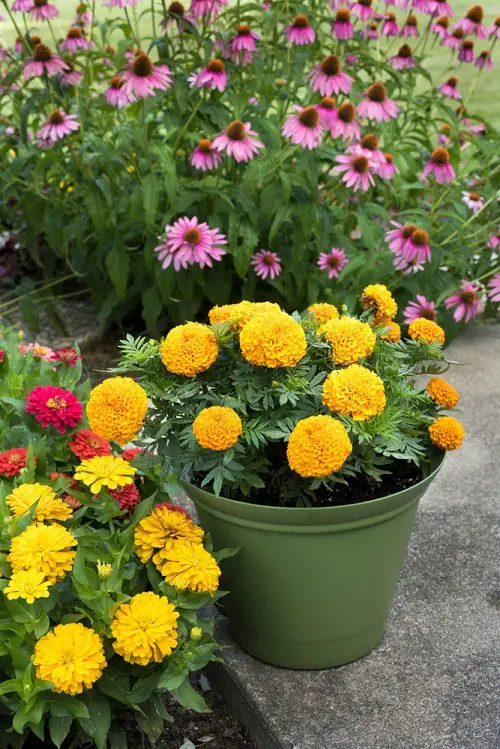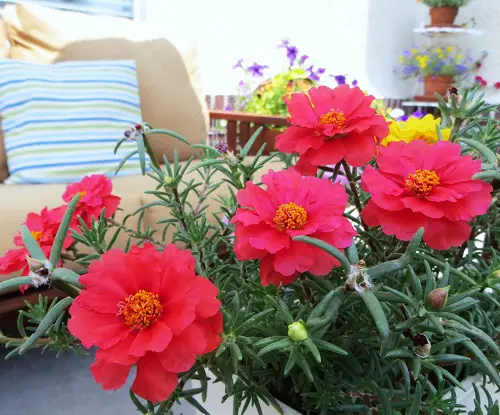The More You Cut These Flowers, the More They Bloom! Check out our guide to flowers that flourish from deadheading.
In order to gain something, you have to lose something. This is especially true with certain varieties of annuals and perennials that bloom better after their flowers are removed. In this deadheading flowers list, we present a selection of such plants that flower profusely the more you cut them! So get your shears ready, and let’s deadhead!
What is Deadheading?
Deadheading is simply the process of removing old flowers to make room for new ones. Once flowering begins to fade, the plant will focus all its energy on saving them for longer and producing seeds. However, pinching off the spent flower stems will trick the plant into producing another round of flowers to ensure consistent blooms and a lush growth cycle.
This filtering process depends on the lifespan of the flowers and is not meant for all flowering plants. Some plants are “self-cleaning,” meaning they drop their flower heads post-bloom, such as impatiens, so avoid these.
Also, avoid cutting old flowers in the fall, as many creatures rely on these seed pods for food and sustenance.
Now, let’s move on to our fine selection of plants that benefit from deadheading. In fact, the more you deadhead, the better their blooms!
The More You Cut These Flowers, the More They Bloom!
1. Cosmos
Botanical Name: Cosmos
Don’t sulk that your once beautiful cosmos blooms are now disappearing! Simply snip away, and you’ll find its delicate, saucer-shaped white, pink, red, and orange petals sprouting again.
Rather than pinching off the spent flower head, you can trim the slender stem all the way back to the first leaf below the blossom. Once deadheaded, the plant may even continue flowering into fall.
2. Roses
Botanical Name: Rosa
Nothing spells classic romance like a rose-filled yard. But how do you keep these charmers coming back, that too bigger and more beautiful each time? Pinch the spent ones, of course!
To keep your roses thriving, remove fading flowers by cutting just above a set of healthy leaves as soon as you notice. And voila, the soft, aromatic petals of this iconic flower will again turn your bashful little garden into a flamboyant love paradise!
3. Coreopsis
Botanical Name: Coreopsis
Gardening can be hard work, but the results always speak for themselves, and so will deadheading the bright yellow flowers of Coreopsis! This plant blooms amply once the dying are done away with!
All you need to do is pick up a clipper and trim off the old flowers down to the nearest set of leaves to rejuvenate it!
4. Dahlias
Botanical Name: Dahlia
Dahlias are the independent, space-loving divas of your garden! Forget other plants crowding their territory; they don’t even appreciate their own extra bits coming in the way of their extraordinary blooms!
Pick up your gardening tools and deadhead every few days during the blooming season. You’ll be blessed with a flurry of fluffy, dome-shaped dahlia blossoms again and again.
5. Petunias
Botanical Name: Petunia
If you want a ton of color from a single source, then grow petunias! This summer annual’s flowers come in a wide range of patterns and shades of pink, red, purple, and yellow.
To really augment their beauty, deadhead wilted blooms every day using your fingers to encourage new blooms for a longer period of time.
6. Geraniums

Botanical Name: Pelargonium
Producing inch-wide clusters of vibrant blooms, Geraniums can be coaxed into repeated blooming faster by deadheading their old flowers.
You don’t have to snip individual flowers of it, though–just cut the entire flower stalk down once it looks weak and faded.
7. Marigolds

Botanical Name: Tagetes
Marigolds bloom more after deadheading. To keep the plant blooming, remove the faded flowers by pinching them off just above the next set of leaves.
Marigolds are often used as a natural pest repellent in gardens, so a better-thriving plant will not only look beautiful but also have practical uses.
8. Zinnias

Botanical Name: Zinnia
Few flower species can match the versatility of zinnias. Their multi-colored blooms come in the shape of stars, buttons, domes, and even that of a cactus and are often double-flowered.
So, to enjoy a long time (yes, because they are very long-lasting) they spend with you before beginning again, trick the plant by deadheading it to obtain healthier and more attractive flowers.
9. Moss Rose

Botanical Name: Portulaca grandiflora
The moss rose’ pastel-colored, single, double, or semi-double flowerheads open only on bright sunny days. However, deadheading can help increase portulaca blooms!
Simply pinch away flowers that are past their prime or when the plant starts looking messy and straggly with closed buds.


